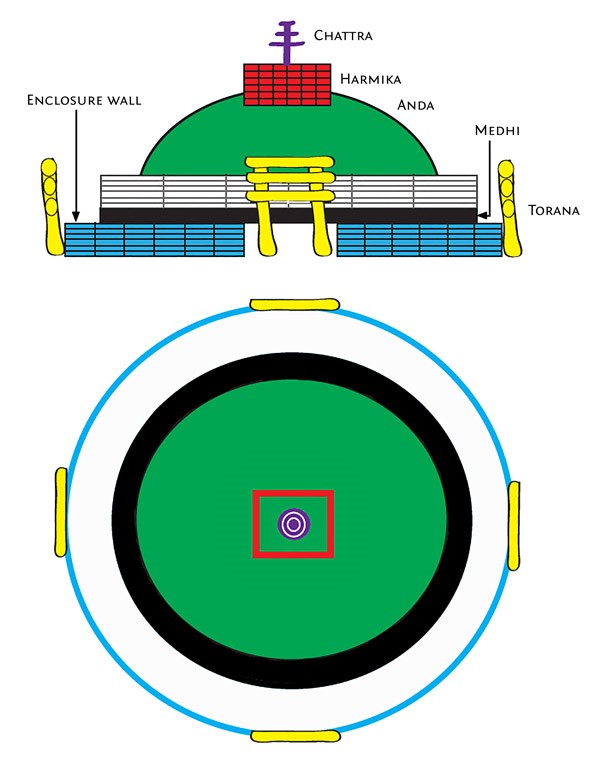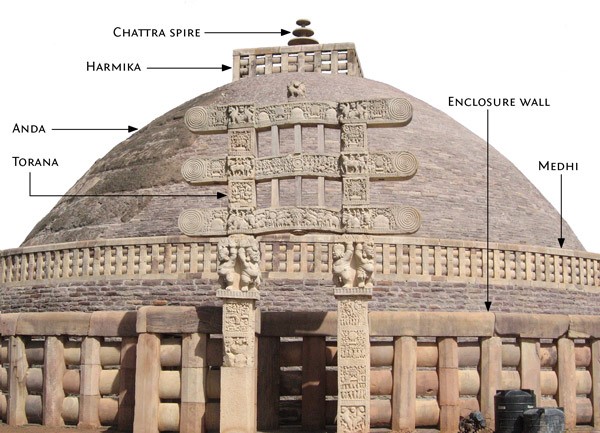Description

Disclaimer: Copyright infringement not intended.
Context: The Archaeological Survey of India (ASI) stumbled upon a 1,300-year-old stupa right in the middle of a mining site in Odisha’s Jajpur district from where Khondalite stones were supplied for the beautification project around the 12th century Shree Jagannath Temple in Puri.
Details:
- The stupa could be 4.5-metre tall and initial assessment showed that it may belong to the 7th or 8th century.
- The archaeological asset was found at Parabhadi, which is situated near Lalitagiri, a major Buddhist complex, having a large number of stupas and monasteries. After discovery of the Buddhist stupa from the mining site, the ASI intervened and asked the Odisha government to stop mining through its Odisha Mining Corporation (OMC). The mining has since stopped.
.jpeg)
Khondalite stones:
- They were widely used in ancient temple complexes.
- The State government had come up with an ambitious plan to spend ₹3,208 crore under the Augmentation of Basic Amenities and Development of Heritage and Architecture (ABADHA) scheme in three years to transform Puri into a world heritage city.
- Khondalite stones are proposed to be used widely to maintain aesthetic value of some projects such as the heritage security zone, the Jagannath Ballav pilgrim centre, Puri lake development project, the Atharnala heritage project and the Matha Development Initiative.
Controversy:
- Sukhuapada was the biggest of six Khondalite stone blocks reserved for the OMC.
- With the ASI taking control of Sukhuapada site, the OMC may find it difficult to supply Khondalite stones for the State government’s ambitious temple development programmes.
- It may trigger another round of confrontation between the Centre and the State government. Violation of the ASI guidelines was a major controversy surrounding the redevelopment project in Puri.
Stupa:

Disclaimer: Copyright infringement not intended.
hguides.com if you would like to reuse this image.
In the most basic sense, as an architectural representation of a sacred burial site, a stupa — no matter where it is located in the world or when it was built — has three fundamental features.
- A hemispherical mound (anda)The anda’s domed shape (green highlights) recalls a mound of dirt that was used to cover the Buddha’s remains. As you might expect, it has a solid core and cannot be entered. Consistent with their symbolic associations, the earliest stupas contained actual relics of the Buddha; the relic chamber, buried deep inside the anda, is called the tabena. Over time, this hemispherical mound has taken on an even grander symbolic association: the mountain home of the gods at the center of the universe.
- A square railing (harmika)The harmika (red highlights) is inspired by a square railing or fence that surrounded the mound of dirt, marking it as a sacred burial site.
- A central pillar supporting a triple-umbrella form (chattra) The chattra, in turn, was derived from umbrellas that were placed over the mound to protect it from the elements (purple highlights). Just as the anda’s symbolic value expanded over time, the central pillar that holds the umbrellas has come to represent the pivot of the universe, the axis mundialong which the divine descends from heaven and becomes accessible to humanity. And the three circular umbrella-like disks represent the three Jewels, or Triantha, of Buddhism, which are the keys to a true understanding of the faith: (a) Buddha; (b) dharma (Buddhist teachings or religious law); and (c) sangha (monastic community).

Around these three core building blocks were added secondary features.
- Enclosure wall with decorated gateways (toranas) at the cardinal directionsThe wall — with its trademark three horizontal stone bars (in the top image) — surrounds the entire structure. The wall is marked in light blue highlights and the toranas in yellow.
- A circular terrace (medhi)The terrace — surrounded by a similar three-bar railing — supports the anda and raises it off the ground (black highlights); it likely served as a platform for ritual circumambulation.

Disclaimer: Copyright infringement not intended.
|
PRACTICE QUESTION
Q) Discuss the various salient features of a Buddhist Stupa. (250 words)
|

https://epaper.thehindu.com/ccidist-ws/th/th_delhi/issues/26795/OPS/G31AU9B49.1+G3MAU9R2J.1.html

















